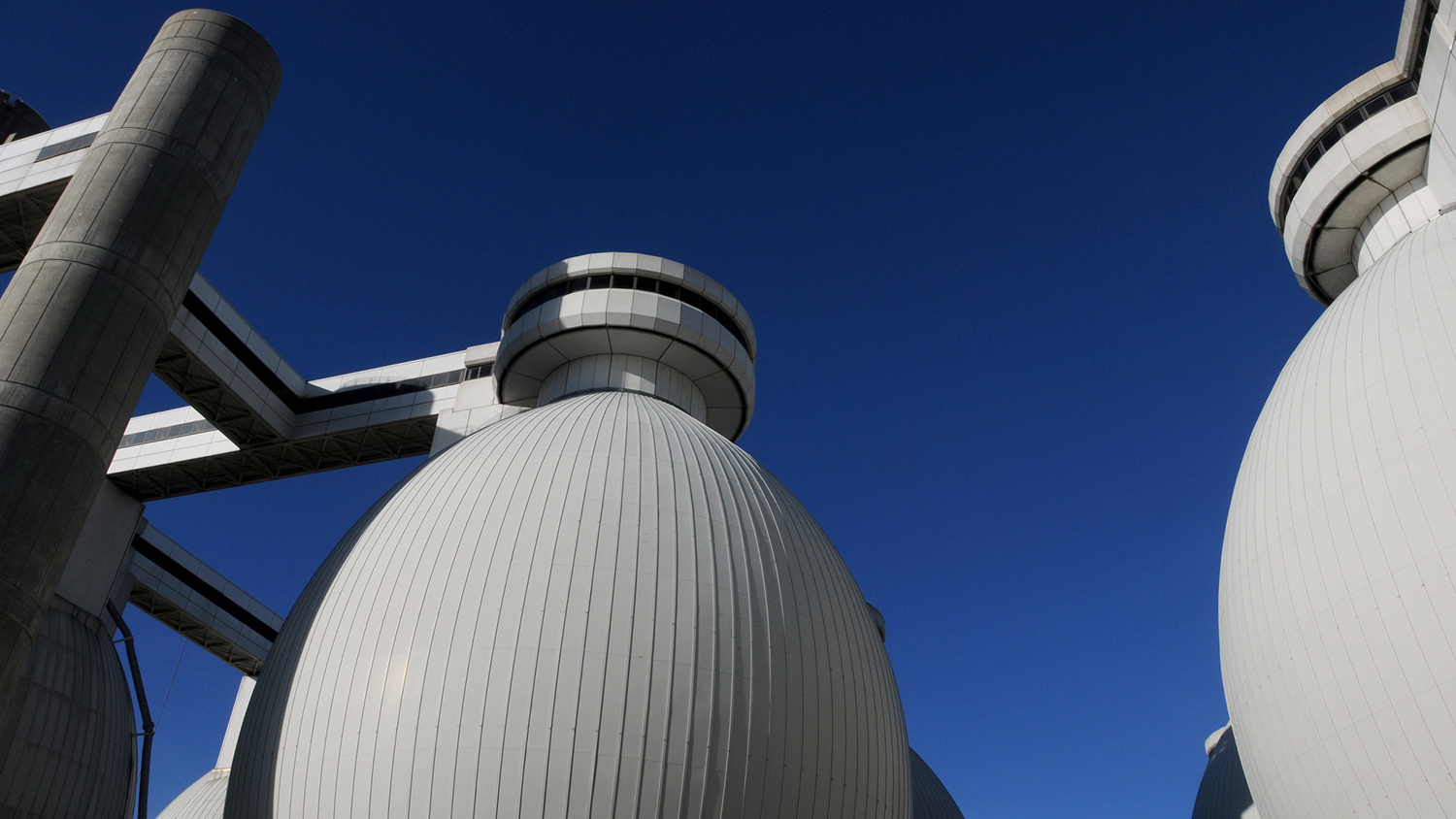Turning (More) Fat and Sewage Into Natural Gas

For Immediate Release
North Carolina State University researchers have developed what is, to date, the most efficient means of converting sewage sludge and restaurant grease into methane.
After treating sewage, wastewater treatment plants are left with solid sludge, called biosolids. For years, utilities have treated biosolids with microbes that produce methane. In recent years, utilities have been adding grease interceptor waste (GIW) into the mix.
Grease interceptors are used to trap fat, oil and grease from food service establishments so that they don’t clog up sewers. By adding GIW in with their biosolids, utilities can produce more methane, making the entire operation more efficient. But there are challenges.
“Turning biosolids and GIW into a renewable source of clean energy is a laudable goal,” says Francis de los Reyes, a professor of civil, construction and environmental engineering at NC State and lead author of a paper on the work. “But if you add too much GIW into the anaerobic digester they use to treat biosolids, the system goes haywire – and methane production plummets.
“Our goal with this work was to figure out the best balance of biosolids and GIW for maximizing methane production. And we were able to make significant advances.”
The researchers determined that increasing the amount of GIW they fed into the digester a little at a time allowed them to increase the amount of GIW in the mix to the point where it made up 75% of the overall volatile solids, or feedstock.
“This is significantly higher than the typical amount of GIW added to the biosolids in existing facilities,” de los Reyes says.
This allowed the researchers to achieve the highest methane yield reported to date for lipid-rich waste: 0.785?liters of methane per gram of volatile solids put into the digester.
“This is roughly twice what is commonly reported for similar systems,” de los Reyes says.
“This should make methane production on a commercial scale more economically attractive for many wastewater treatment facilities, which may encourage them to capture and sell their methane, rather than burning it off on-site.”
The researchers were also able to identify a suite of microbes that appear to be particularly important in converting lipid-rich waste into methane. The researchers are following up with studies on other types of food waste, such as meat and fruit/vegetable waste. They are also looking at fundamental microbial ecological theories to explain how the needed microbial species come to dominate and persist in the ecosystems found inside the waste digesters.
The paper, “Increased loading stress leads to convergence of microbial communities and high methane yields in adapted anaerobic co-digesters,” is published in the journal Water Research. First author of the paper is Ling Wang, a former Ph.D. student at NC State who is now a postdoctoral researcher at the University of Chicago. The paper was co-authored by Elvin Hossen, a Ph.D. student at NC State; Tarek Aziz, an assistant professor of civil, construction and environmental engineering at NC State; and Joel Ducoste, a professor of civil, construction and environmental engineering at NC State.
The work was done with support from the North Carolina Water Resources Research Institute.
-shipman-
Note to Editors: The study abstract follows.
“Increased loading stress leads to convergence of microbial communities and high methane yields in adapted anaerobic co-digesters”
Authors: Ling Wang, Elvin H. Hossen, Tarek N. Aziz, Joel J. Ducoste and Francis L. de los Reyes III, North Carolina State University
Published: Oct. 12, Water Research
DOI: 10.1016/j.watres.2019.115155
Abstract: Enhancing biogas production, while avoiding inhibition of methanogenesis during co-digestion of grease interceptor waste (GIW), can help water resource recovery facilities reduce their carbon footprint. Here we used pre-adapted and non-adapted digesters to link microbial community structure to digester function. Before disturbance, the pre-adapted and non-adapted digesters showed similar methane production and microbial community diversity but dissimilar community composition. When exposed to an identical disturbance, the pre-adapted digester achieved better performance, while the non-adapted digester was inhibited. When re-exposed to disturbance after recovery, communities and performance of both digesters converged, regardless of the temporal variations. Co-digestion of up to 75% GIW added on a volatile solids (VS) basis was achieved, increasing methane yield by 336% from 0.180 to 0.785 l-methane/g-VS-added, the highest methane yield reported to date for lipid-rich waste. Progressive perturbation substantially enriched fatty acid-degrading Syntrophomonas from less than 1% to 24.6% of total 16S rRNA gene sequences, acetoclastic Methanosaeta from 2.3% to 11.9%, and hydrogenotrophic Methanospirillum from less than 1% to 6.6% in the pre-adapted digester. Specific hydrolytic and fermentative populations also increased. These ecological insights demonstrated how progressive perturbation can be strategically used to influence methanogenic microbiomes and improve co-digestion of GIW.


